– Due
Due
[Two]
film and mixed media installation
2017-2019
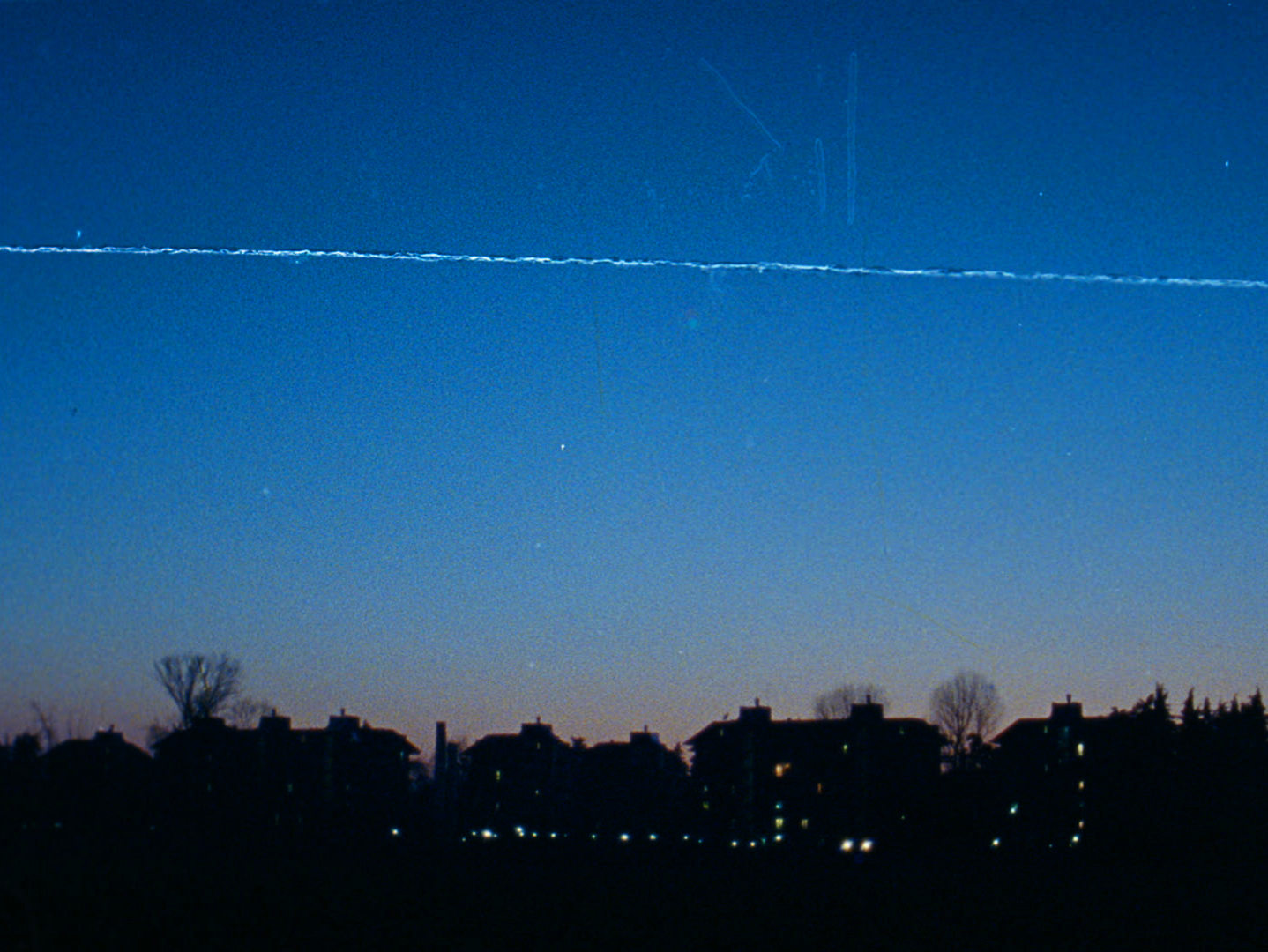
Due is a study on Milano 2, a residential neighbourhood located just outside Milano.
Built as a utopian city between 1970 and 1979, Milano 2 was Silvio Berlusconi's first ambitious project. It was in Milano 2 that TeleMilano, the first private Italian TV channel, started to broadcast, which made the area the bridgehead of the media and, later, political empire of Berlusconi.
Milano 2, which nowadays may seem an ordinary suburban area, has functioned as a laboratory for a form-of-life which, in the decades of the “Berlusconismo”, spread nationally and left a long-lasting mark on Italian culture.
The film includes an interview with Enrico Hoffer, the architect that designed the landscaping of the neighbourhood, as well as fragments from a 1974 brochure advertising the real estate project.
Essay
The city of number ones. Pictures from Milano 2
2017
Film trailer
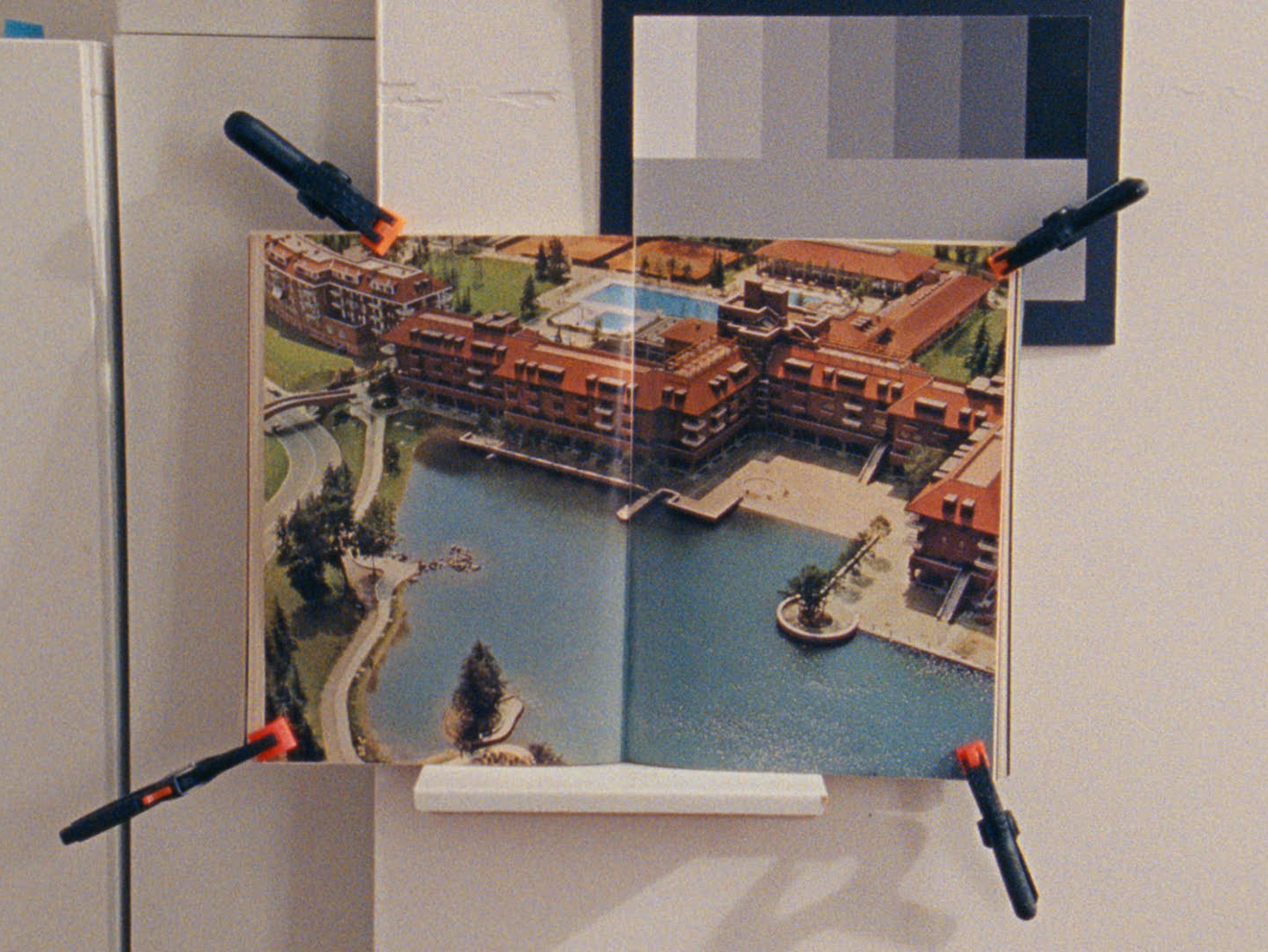
A film by Riccardo Giacconi
With Silvia Costa
With the participation of Enrico Hoffer
Prologue and epilogue Antonella Anedda
Director of photography Leo Lefevre
Sound Arno Ledoux, Pierre George
Executive producer Estelle Benazet
Produced by Le Fresnoy – Studio national des arts contemporains
With the support of Careof
Film excerpt
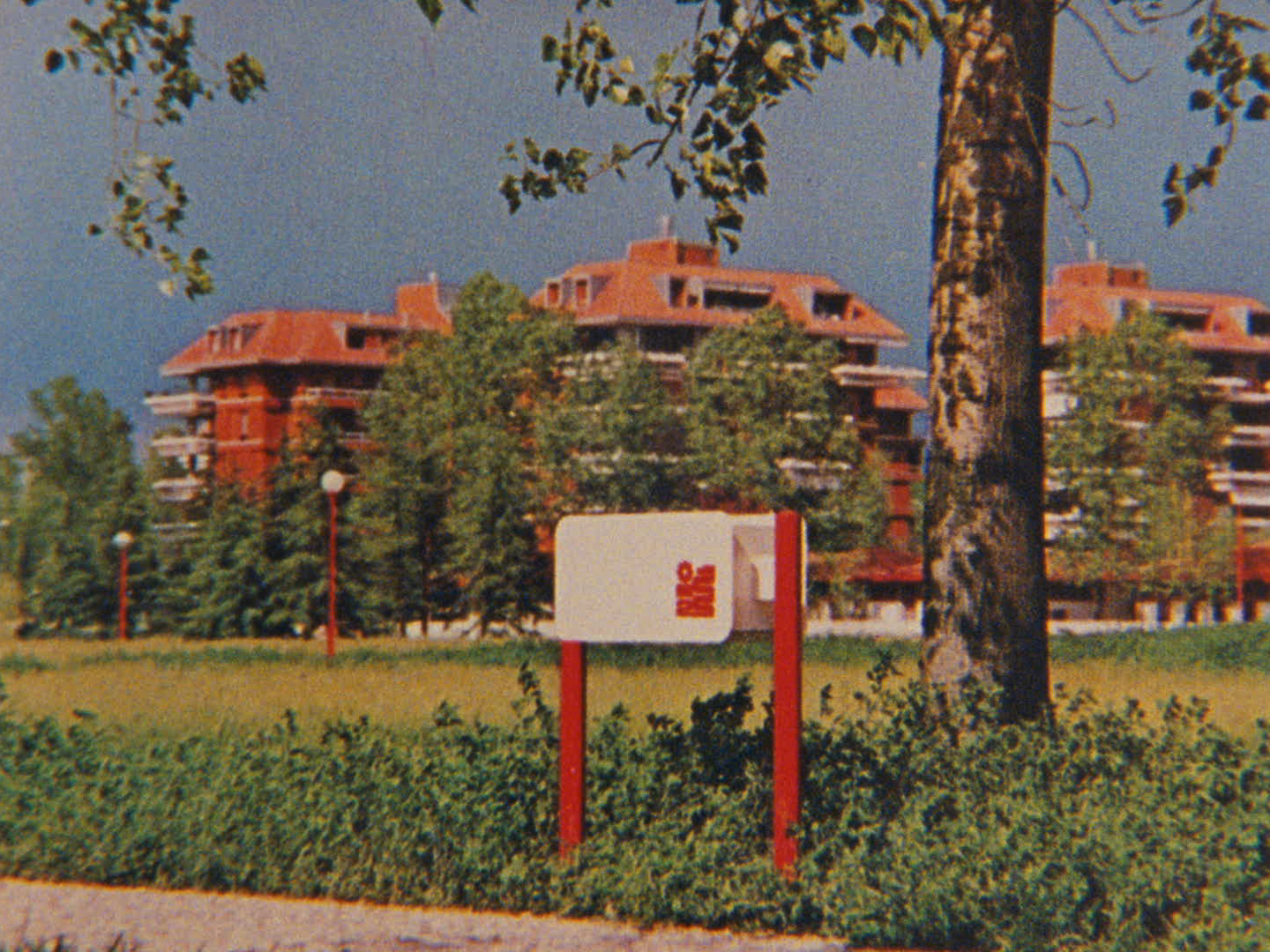
Full Film (English subtitles)
Screenings: 74. Mostra Internazionale d’Arte Cinematografica di Venezia (Settimana della Critica), Venezia, Italy; New York Film Festival, New York, USA (Documentary Shorts program); Kasseler Dokfest, Kassel, Germany; IDFA: International Documentary Filmfestival Amsterdam, The Netherlands; Forumdoc, Belo Horizonte, Brazil; Milano Film Festival, Milano, Italy (2017), Rencontres Internationales Paris Berlin, Paris, France; Haus der Kulturen der Welt, Berlin, Germany; Denver Film Society’s RSC Shorts Festival, Denver, USA; Crossing Europe Filmfestival, Linz, Austria; Hamburg International Short Film Festival, Hamburg, Germany (2018), True/False Film Fest, Columbia (Missouri), USA (2019), Fondazione Prada (2023).
Exhibited at Triennale, Milano (2021); Kunstpavillon and Künstlerhaus Büchsenhausen, Innsbruck, Austria (2019); MAMbo – Museo d'Arte Moderna di Bologna, Italy (2018).
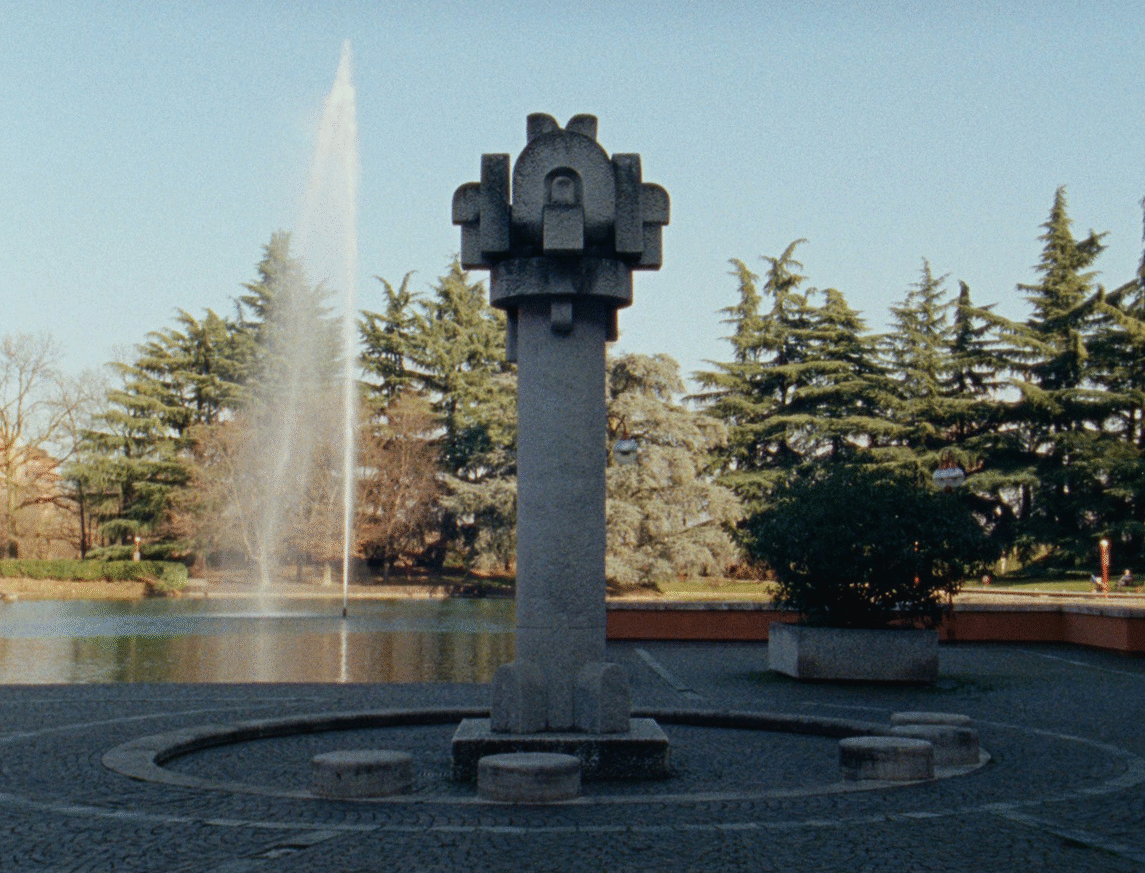
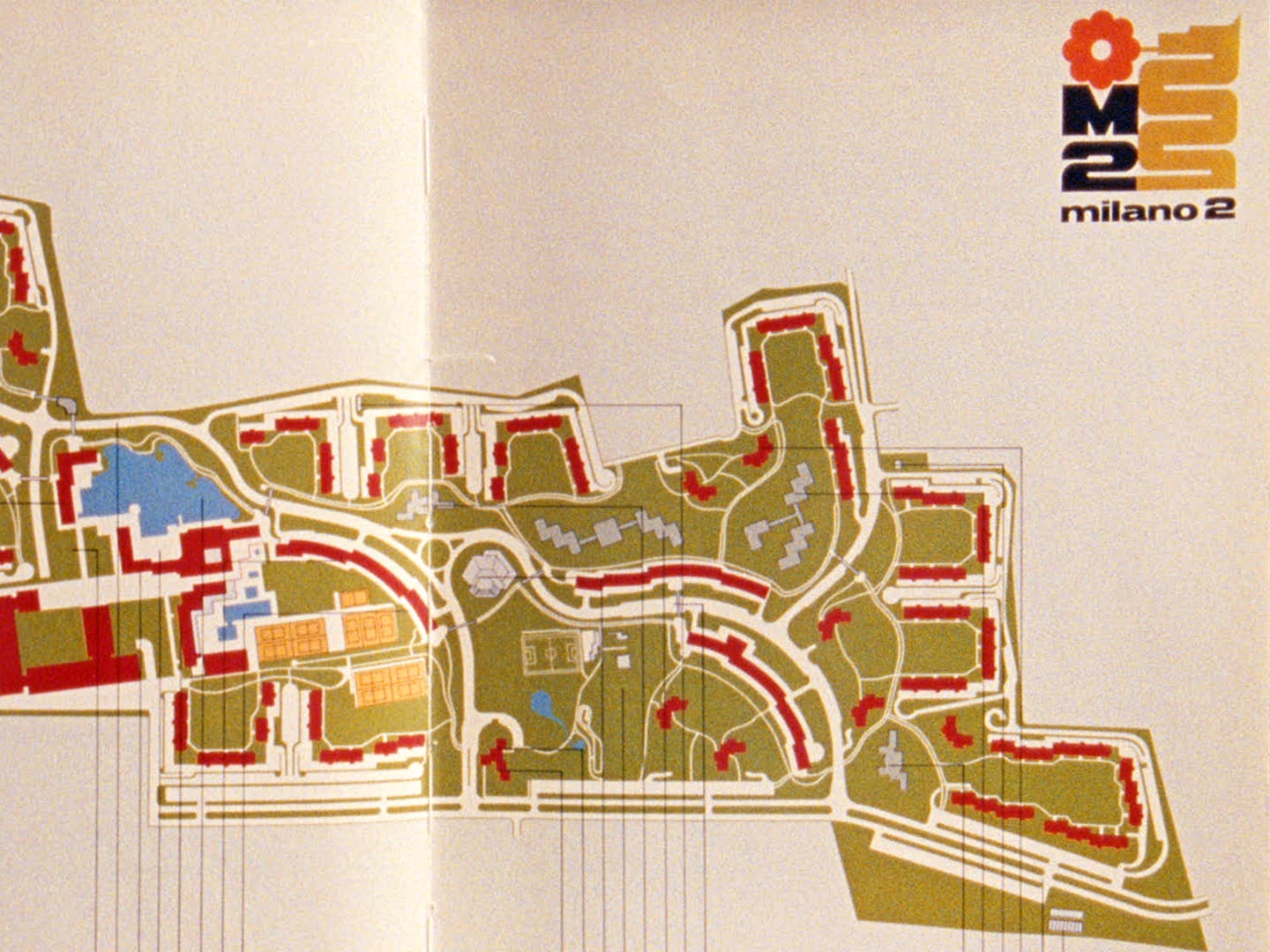
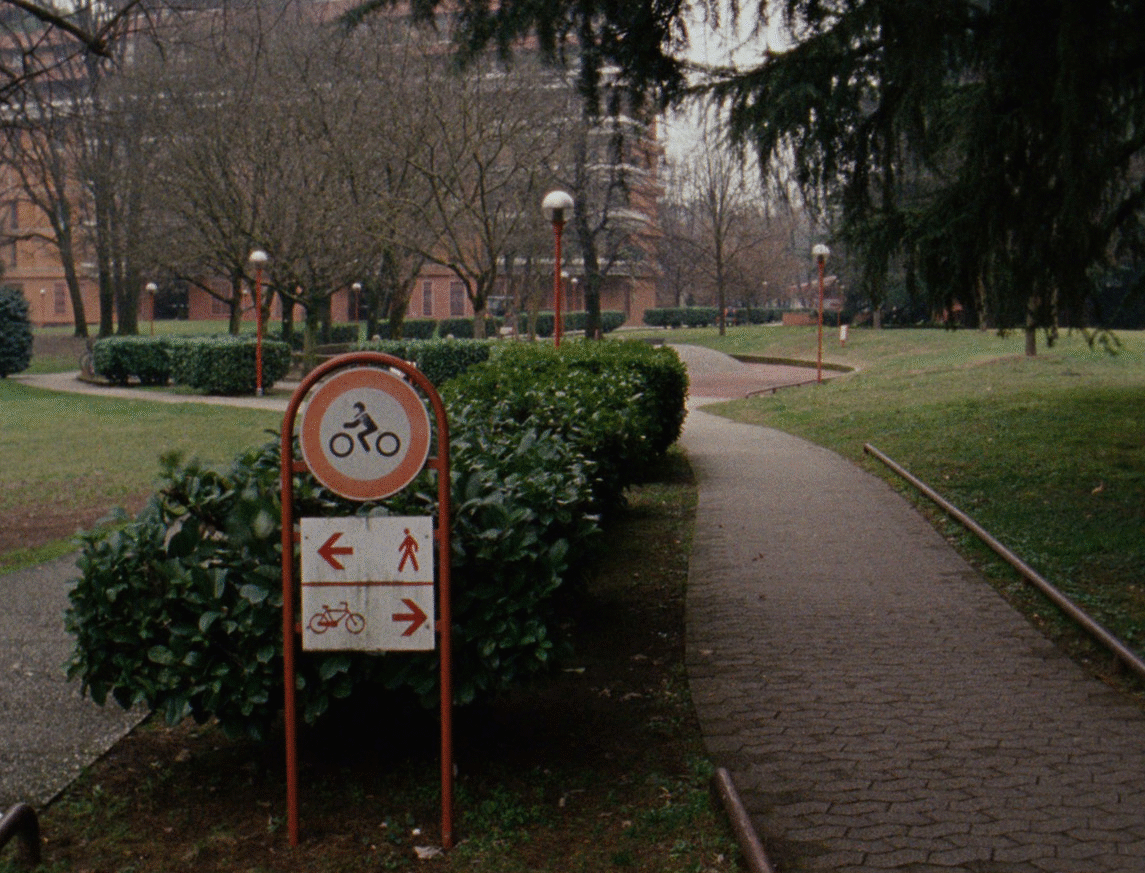
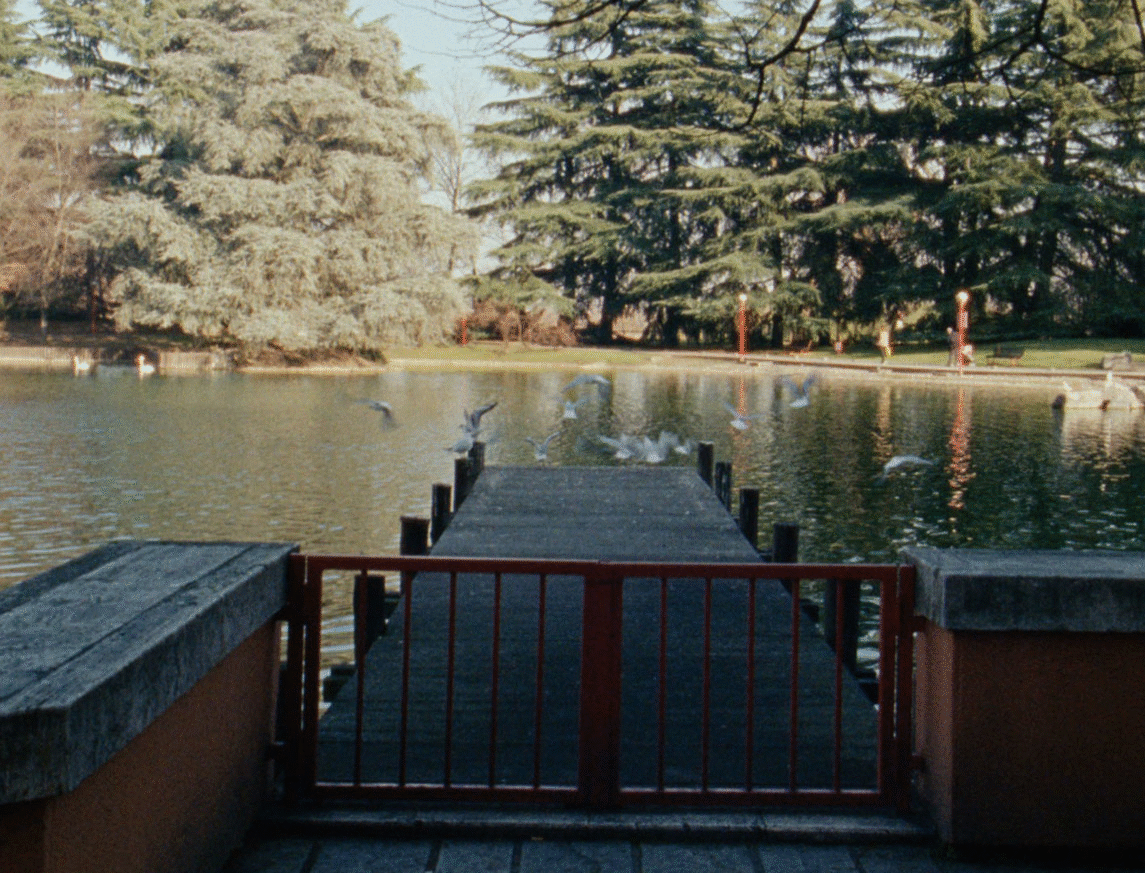
The project includes an installation, comprising a plastic curtain, an audio piece and a book.
The curtain depicts a catalogue of forms, inspired by floorplans of buildings (realized and unrealized) conceived for Milano 2.
The display also includes a book, Milano 2. Una città per vivere, a 1974 publicity volume advertising Milano 2.
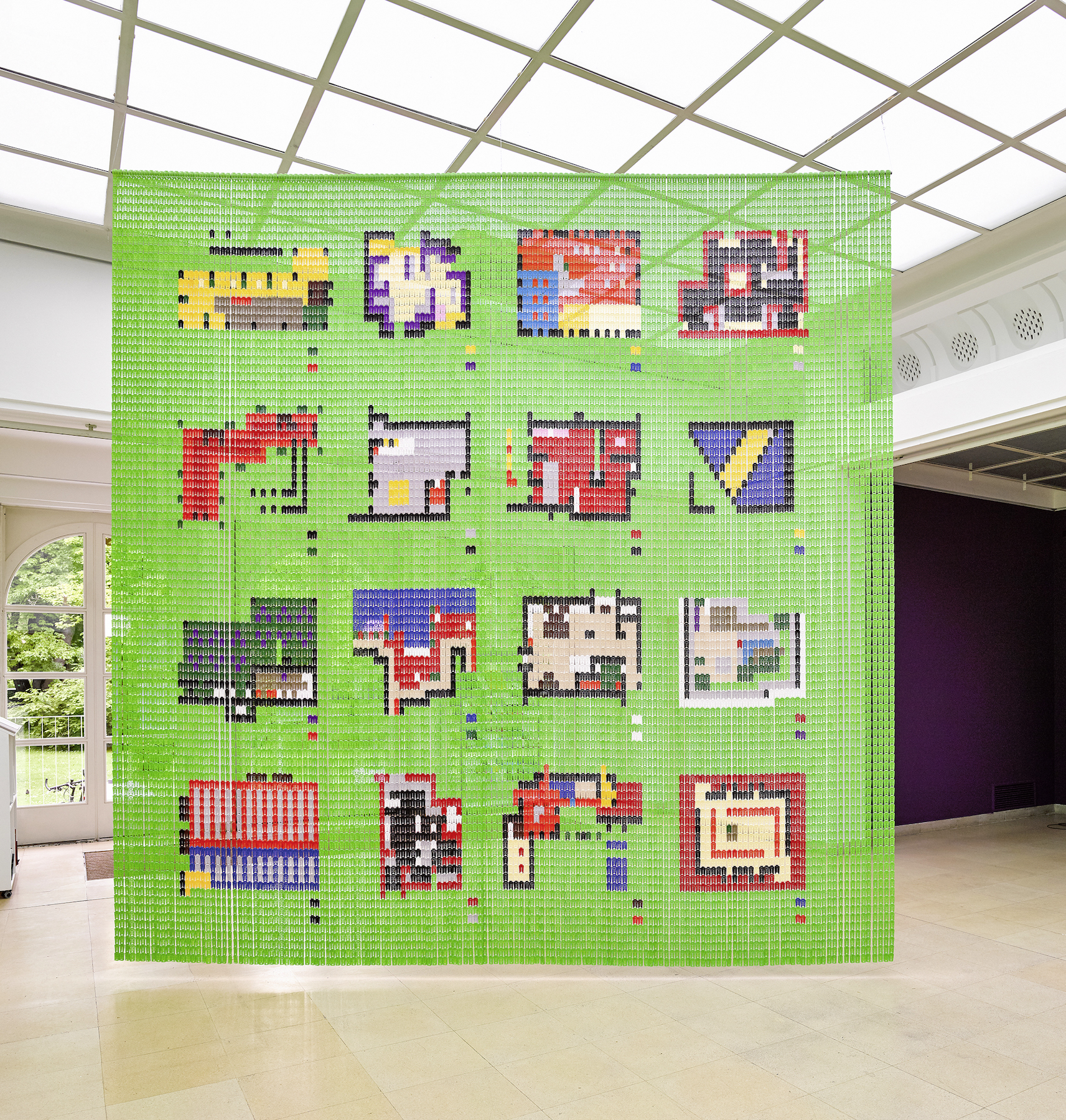
Installation view, Kunstpavillon, Innsbrück
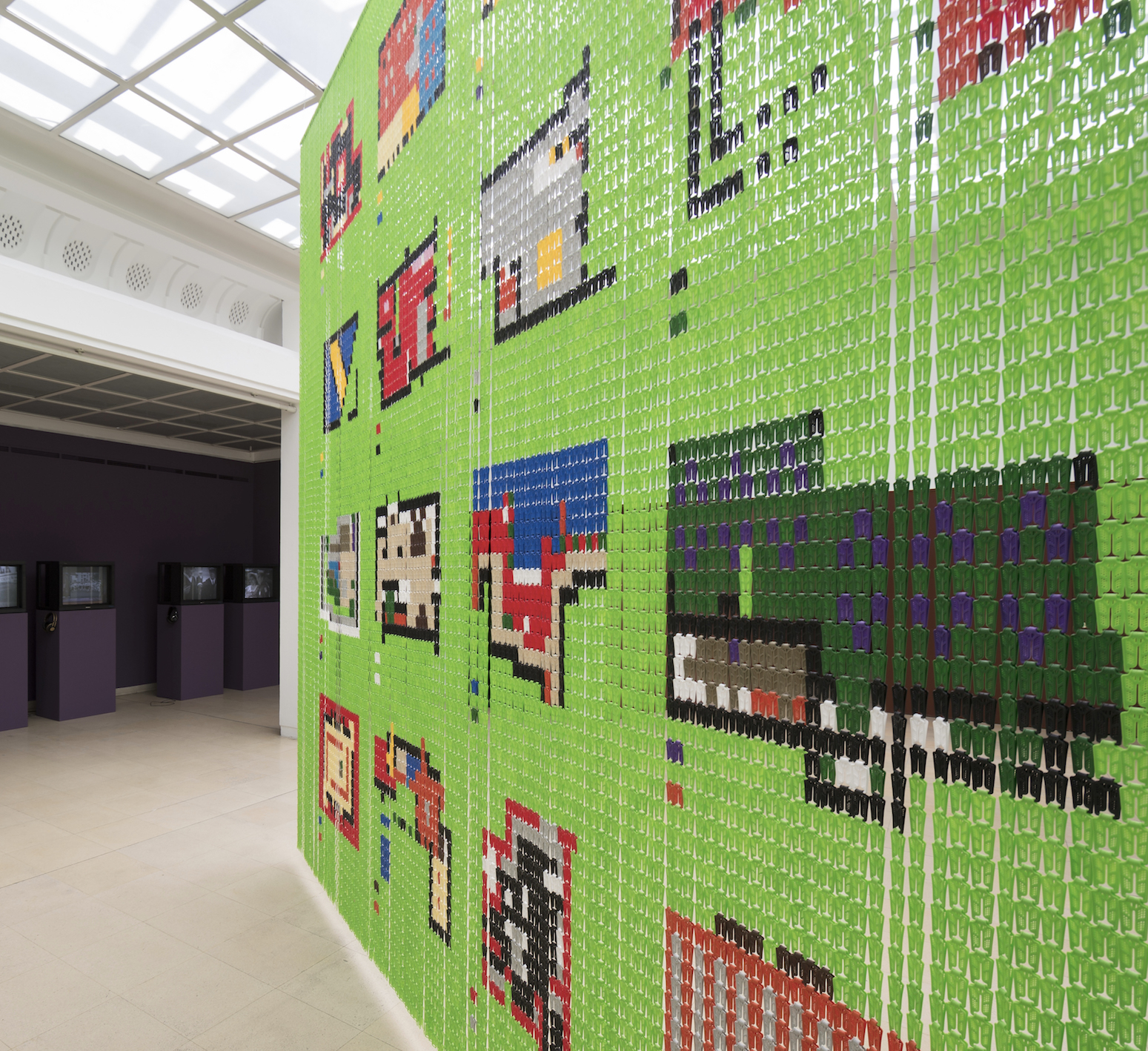
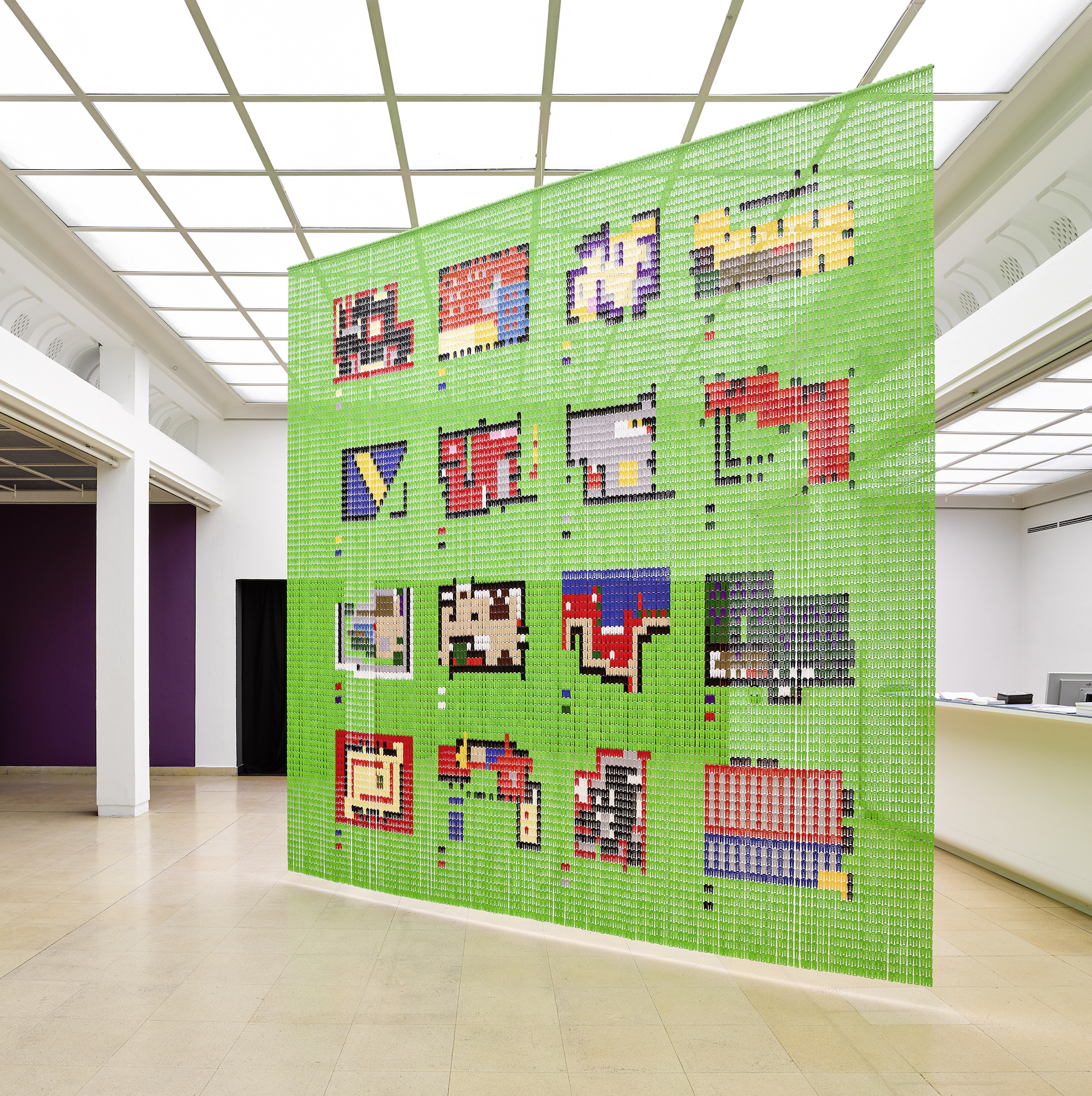
"A large, bright green curtain incorporates 16 colorful, geometrically arranged patterns, the surface character of which reminds of the visual design of video games in the 1980s. Comprising hundreds of identical plastic elements, the work uses a generic form of room divider in Italy – the “standard curtain” between inside and outside, between front room and back room, between public space and private retreat. In a way, Giacconi’s curtain too fulfills this function: two other components of his work are concealed behind it – a book and an audio piece.
The title of the book, Milano 2, is found on the cover: the work is a printed documentation and an advertisement in one – a now historic testimony to a domestic utopia that Berlusconi constructed in the 1970s and which, from today’s perspective, represents an experimental set-up for his subsequent, extremely successful amalgamation of capital (of dubious origin), media (integrated cable TV), and intoxicating feel-good populism. Leafing through the book we are strolling, so to speak, through the various areas of the housing settlement that Berlusconi conceived for an aspiring middle class – as an escape from social unrest in the city, out into a natural idyll free from class struggle and manifest ideologies. In the book we also find the geometric shapes that Giacconi has reproduced on the curtain: These are floor plans of residential zones and housing units in Milano 2; their bright colors intended to awaken desire and longing for such a place.
The nearly 10-minute audio piece, which visitors can listen to while leafing through the book, serves as a counterpoint to this vision free of all contradiction. The recording reproduces passages from a performative reading that took place at Künstlerhaus Büchsenhausen in March 2019, based on an autobiographical text by cultural journalist Carlo Mazza Galanti, who spent his childhood in Milano 2. Mazza Galanti tells of partly disturbing memories, clinical cleanliness, a perfect staging of nature, mafioso neighbors, the sense of simultaneous good fortune and shame at having grown up there. And he recalls the somehow tortuous realization of having participated in an historically inconspicuous but significant project–the ideological backbone of which he later rejected as an adult–, all of which could not blot out, however, his memory of a happy childhood."
– Andrei Siclodi
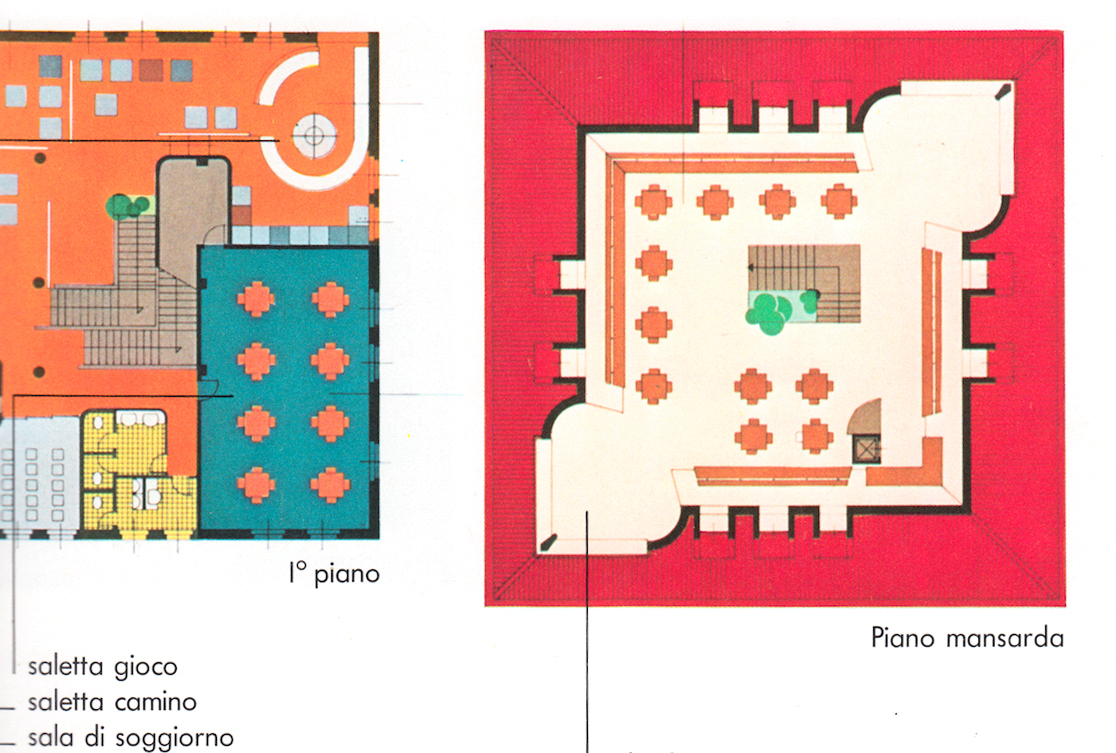
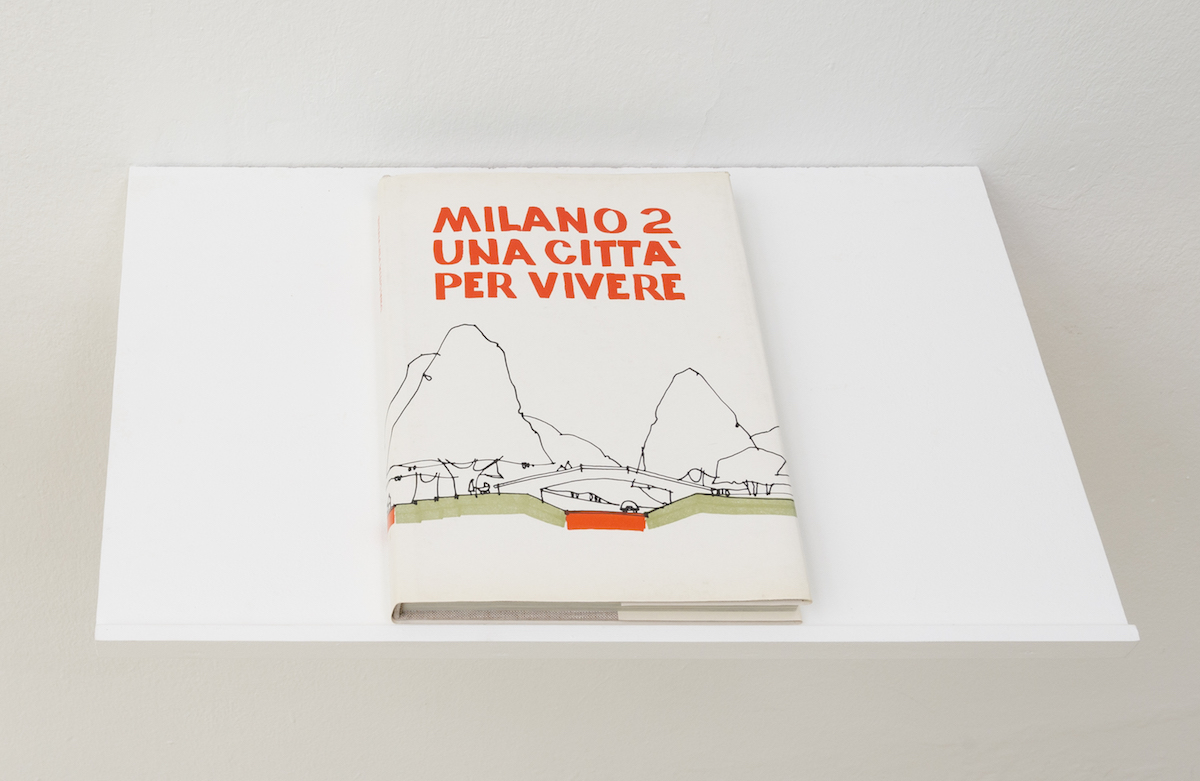
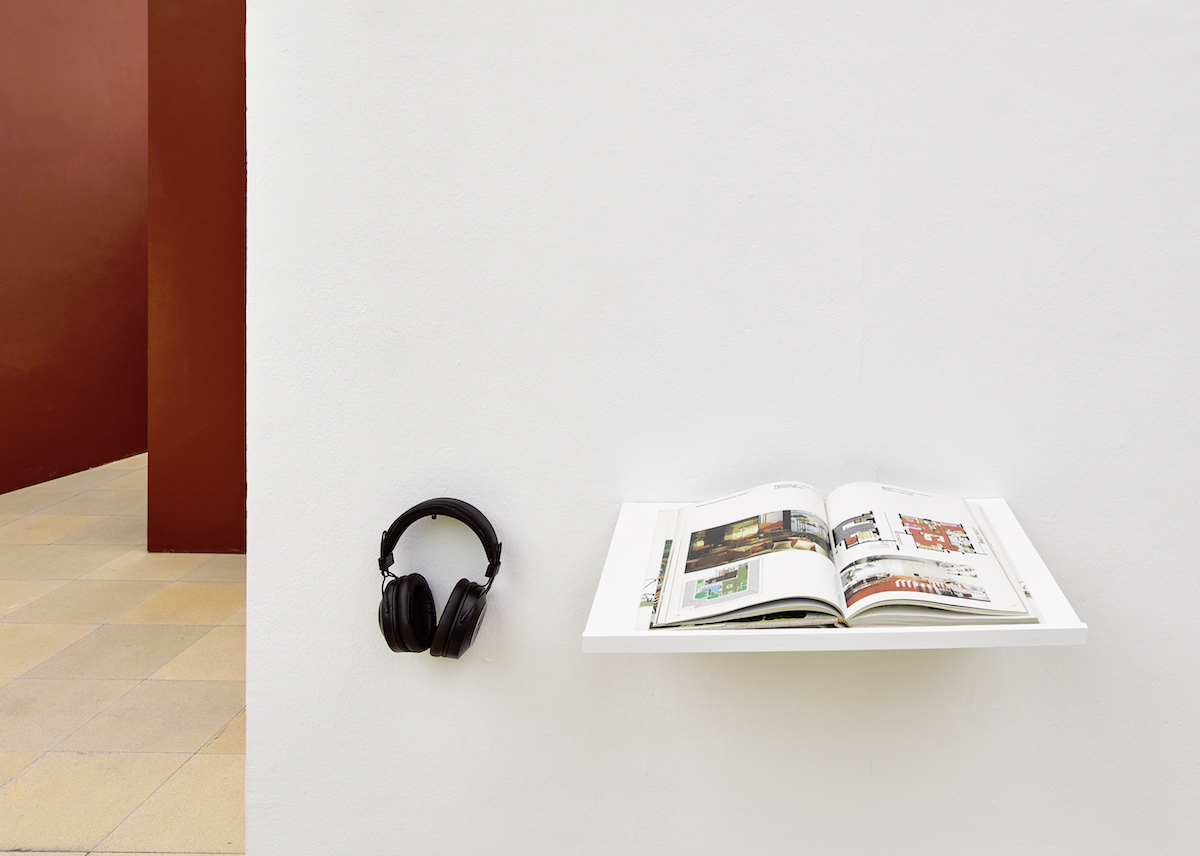
essay by Carlo Mazza Galanti
voices: Vanessa Mühlbacher-Dittmer and Hanna Kempf
performed at Künstlerhaus Büchsenhausen in March 2019.